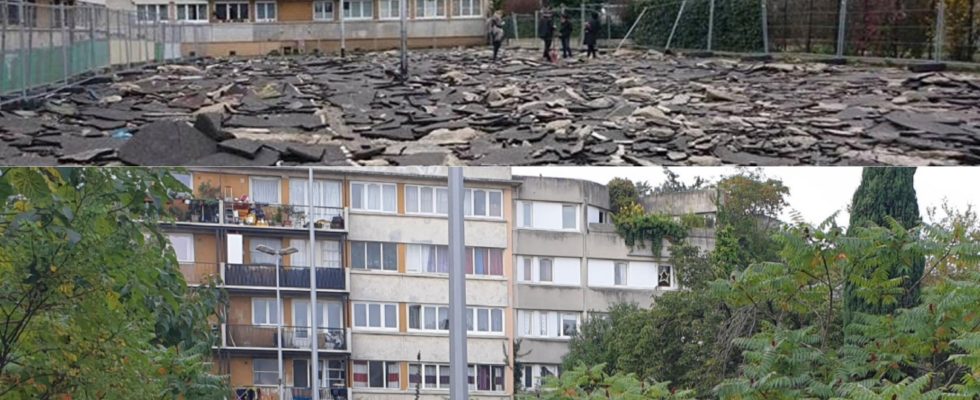The Happy Garden of Aubervilliers, near Paris, grows on a former parking lot left as it was. Despite its very poor soil, asphalt and concrete, the plants flourish there. (Rebroadcast from October 22, 2023)
It is an old parking lot, broken and condemned because of an urban rodeo. A chaos of bitumen and concrete that was left in place, as is, to avoid transporting waste elsewhere, and on which a garden is growing, despite ” very poor and very superficial soil “, as François Vadepied, the landscaper who designed it with the Wagon Landscaping agency, points out. The Happy Garden, which bears the name of one of the buildings surrounding this former car park, welcomed around a hundred cars until 2015 in a housing estate in Aubervilliers, on the outskirts of Paris.
Instead of parking and cars: an urban garden designed like an alpine garden, not because of the topography of the place (it’s completely flat) but for the plants that have been selected. In the mountains, plants adapt to very rocky environments. Here, we just brought a little soil, to start a dynamic, which we simply slipped under the asphalt slabs “, says François Vadepied. And once we had sown and planted, in 2016, nature did its work.
Plants love stone
If you can still see a few pieces of asphalt, vegetation has taken over. A good hundred species grow in place of cars. Guided tour with François Vadepied: ” There we see small pines, alpine pines, which do not measure more than 80 centimeters ». But right next to it, on the edge, a birch and a paulownia have grown several metres since they were planted. We also see thyme, oregano, aromatic plants that reseed very well on these soils, santolina… The plants quite like these stony environments because they put themselves, in a way, on the stone, in the light and the heat. And below, it is in the shade, very protected, so the water remains and it remains quite cool. ». This ecological garden is never watered. It has suffered through hellish heatwaves, but no tree has ever turned yellow. »
For the city’s residents, the garden has become an island of freshness. And other residents benefit from this island of greenery, composed of a border of planted trees and a meadow. When you walk around here in spring or summer, there are a multitude of pollinators. People have seen hedgehogs, the last time we came to garden, we saw a frog: it has also become an interesting environment ecologically in the neighborhood. ” concludes the landscaper. The Happy Garden and all its inhabitants seem to say: everything is so much happier without a car!
How do plants grow on the road?
Do they use their little muscular arms to push aside the tarmac? They actually take advantage of the micro-cracks caused by water or frost in the asphalt or concrete. A seed settles there, at the bottom, germinates, and the young shoot naturally goes to seek light. These are “pioneer” species, capable of colonizing hostile environments. But we also know of a fungus that really grows under the tarmac: the sidewalk agaric. It can break up the asphalt, thanks to a phenomenon called turgor. The pressure of the water inside its cells causes an incompressible force: it splits the road.
